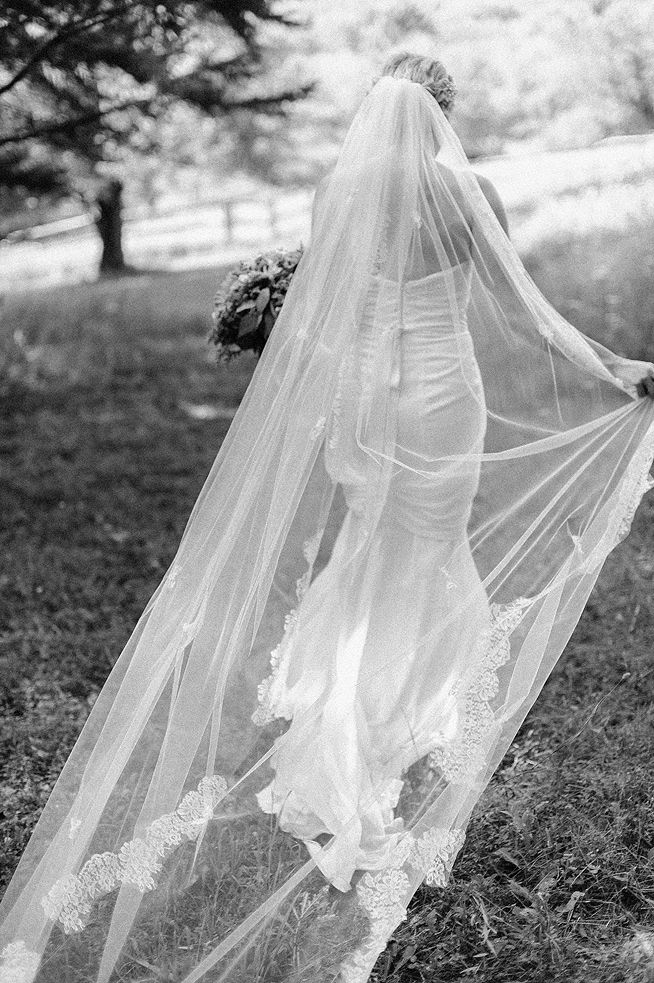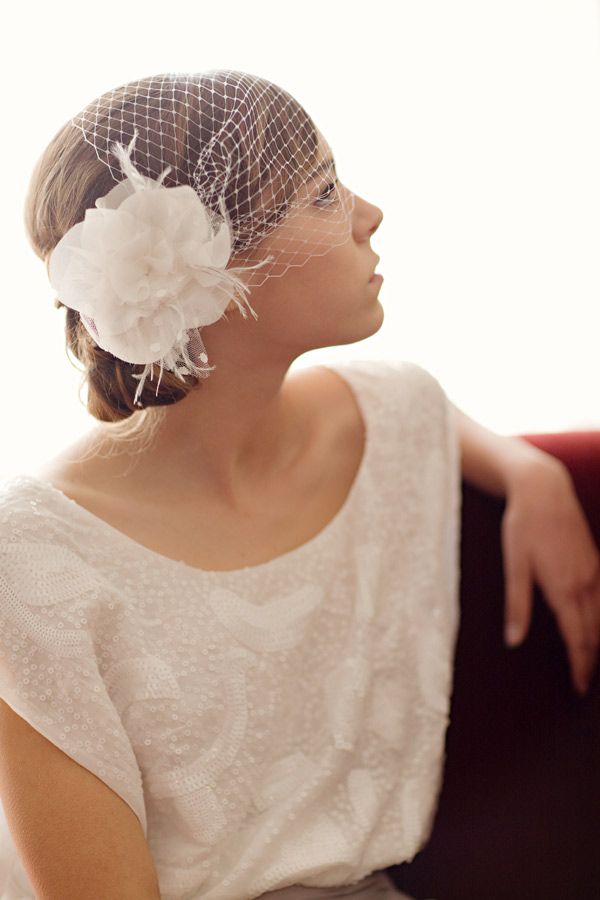Here are a few ceremony do’s and don’ts when it comes to fixing the bride’s gown and veil. These general guidelines will help us avoid awkward moments while still keeping the bride looking pretty!
The Dress

Do:
Fixing the train. This is an expectation of the maid/matron of honor at the beginning of the ceremony when the bride first turns to face the groom. You can also fix the train anytime the bride has moved from her place, like after returning from the unity ceremony. The most important thing with fixing the train: be discrete. Try to find moments that are non-distracting, like during the officiant greeting, or during a song or scripture reading, when the wedding guests’ eyes will be fixed elsewhere.
Don’t:
Obsessively fix the train. Of course, brides are bound to have long dresses, but continually keeping it straight can become very distracting. Use your best judgment here, but bear in mind that every time you bend down to fix it, guests are bound to notice.

The Veil
Do:
Veils can sometimes be quite tricky. If not properly placed prior to the ceremony, veils can become crooked or fall out. The best thing to do is make sure it is nice and snug prior to the ceremony. Hair-spraying the comb piece will ensure security. However, sometimes this delicate material will want to do its own thing. For brides with cathedral veils, it is usually best to make adjustments at the same time as adjusting the train. This way, you can get it all done in one smooth swoop. Usually shorter veils are not as much of an issue, but same rule applies: discrete adjustments coupled with fixing the train. If the bride’s veil falls out while walking down the aisle at the beginning of the ceremony, have the personal attendant pick it up and pass it to the bride’s mother. The maid/matron of honor can then replace it while fixing the train. If this happens at any other point during the ceremony, it is best to leave it out.

Don’t:
When a bride’s veil is flowing in the wind during an outdoor ceremony, it is picturesque! Again, veils are very light and delicate; add a gentle breeze and it will be in constant motion. For the bride with a long cathedral-type veil, just let it flow! Do not constantly fix it, as it will be greatly distracting, and take away from the natural beauty of the outdoor ceremony. It is best for brides to have a back-up plan for an outdoor ceremony: such as a short veil or alternative hairpiece in case of a windy day. Just like constantly fixing the veil can be disruptive, a long veil that turns into a bridal kite is equally distracting. The great outdoors can also lead to little friends attaching to the bride, such as bugs, twigs, leaves, etc. Unless the bride is in danger of a bee sting, leave them alone, as most people will likely not notice the attachments.

 Though we don’t often anticipate needing to make adjustments during a ceremony, they are common. It is best to discuss with the bride what she wants taken care of. Though no one wants to discuss worst-case scenarios with their veil or dress, having a back-up plan helps alleviate distraction and ensures the bride will not be embarrassed by the fine-tuning necessary to keep her looking gorgeous!
Though we don’t often anticipate needing to make adjustments during a ceremony, they are common. It is best to discuss with the bride what she wants taken care of. Though no one wants to discuss worst-case scenarios with their veil or dress, having a back-up plan helps alleviate distraction and ensures the bride will not be embarrassed by the fine-tuning necessary to keep her looking gorgeous!
Photography Credit:
http://www.pinterest.com/pin/262756959483429924/
http://www.jennydemarco.com/blog/2012/05/la-grange-wedding-christa-and-brandon/
http://www.pinterest.com/pin/393502086164846913/
http://www.pinterest.com/pin/24910604160781215/
http://www.pinterest.com/pin/86272149083637045/